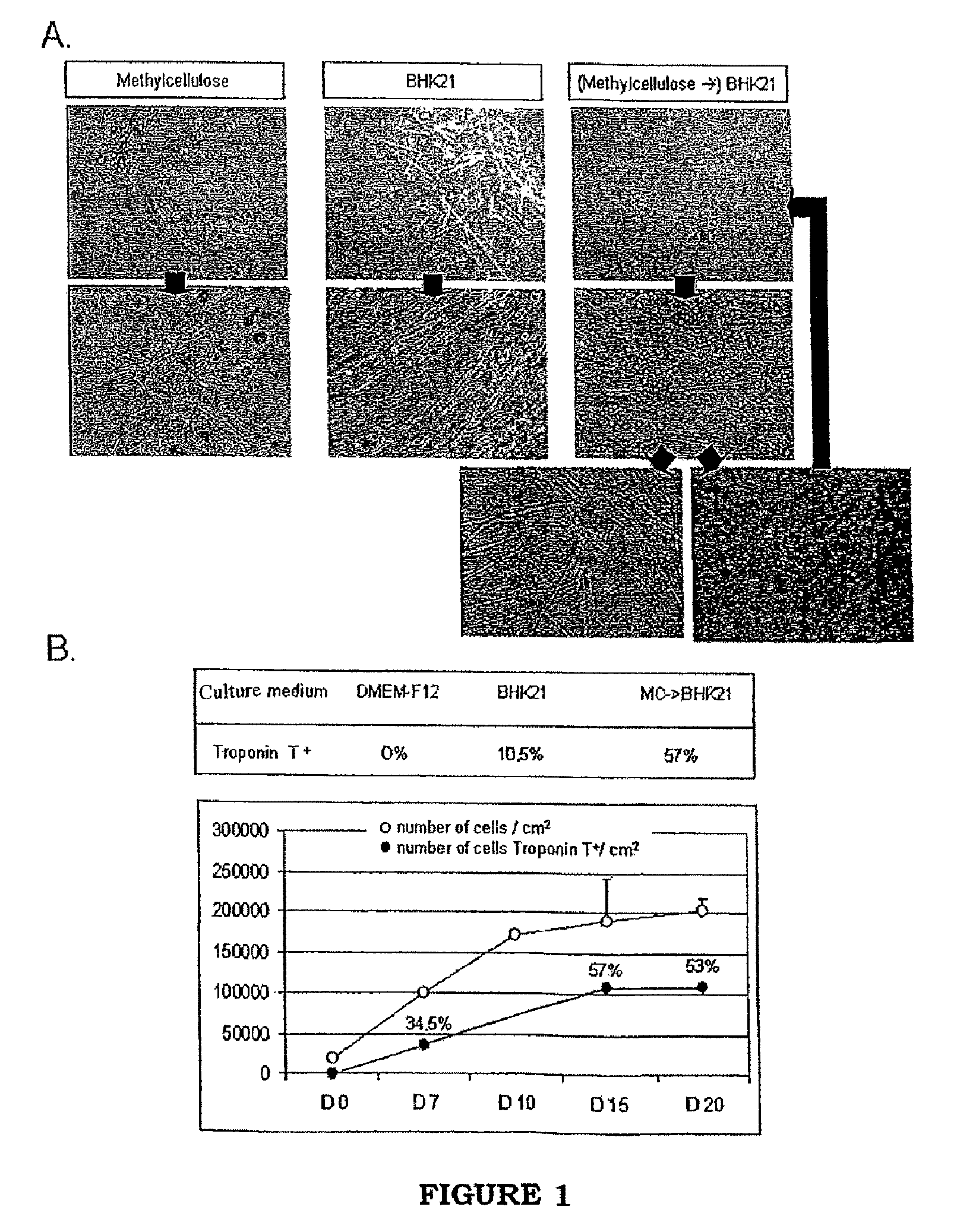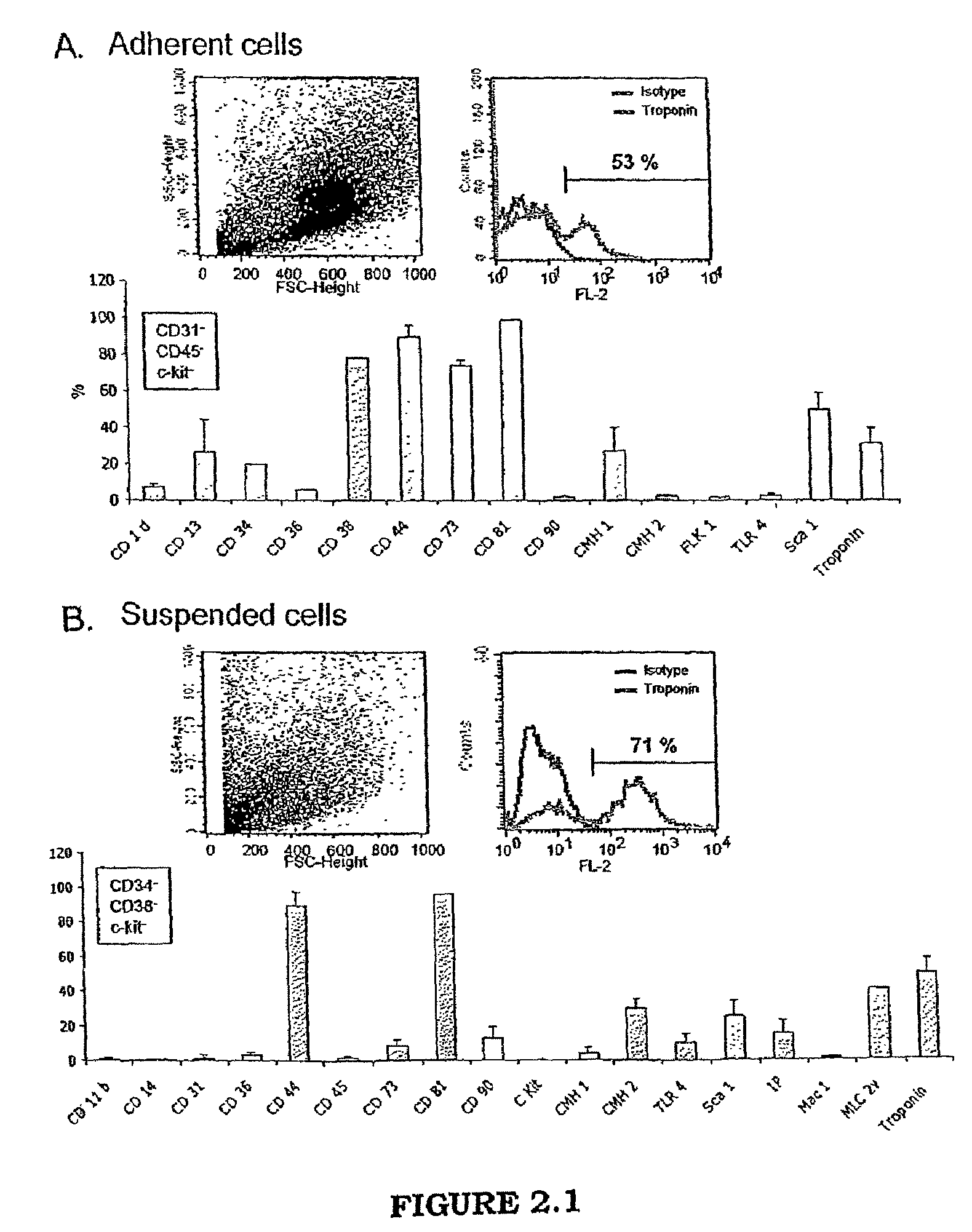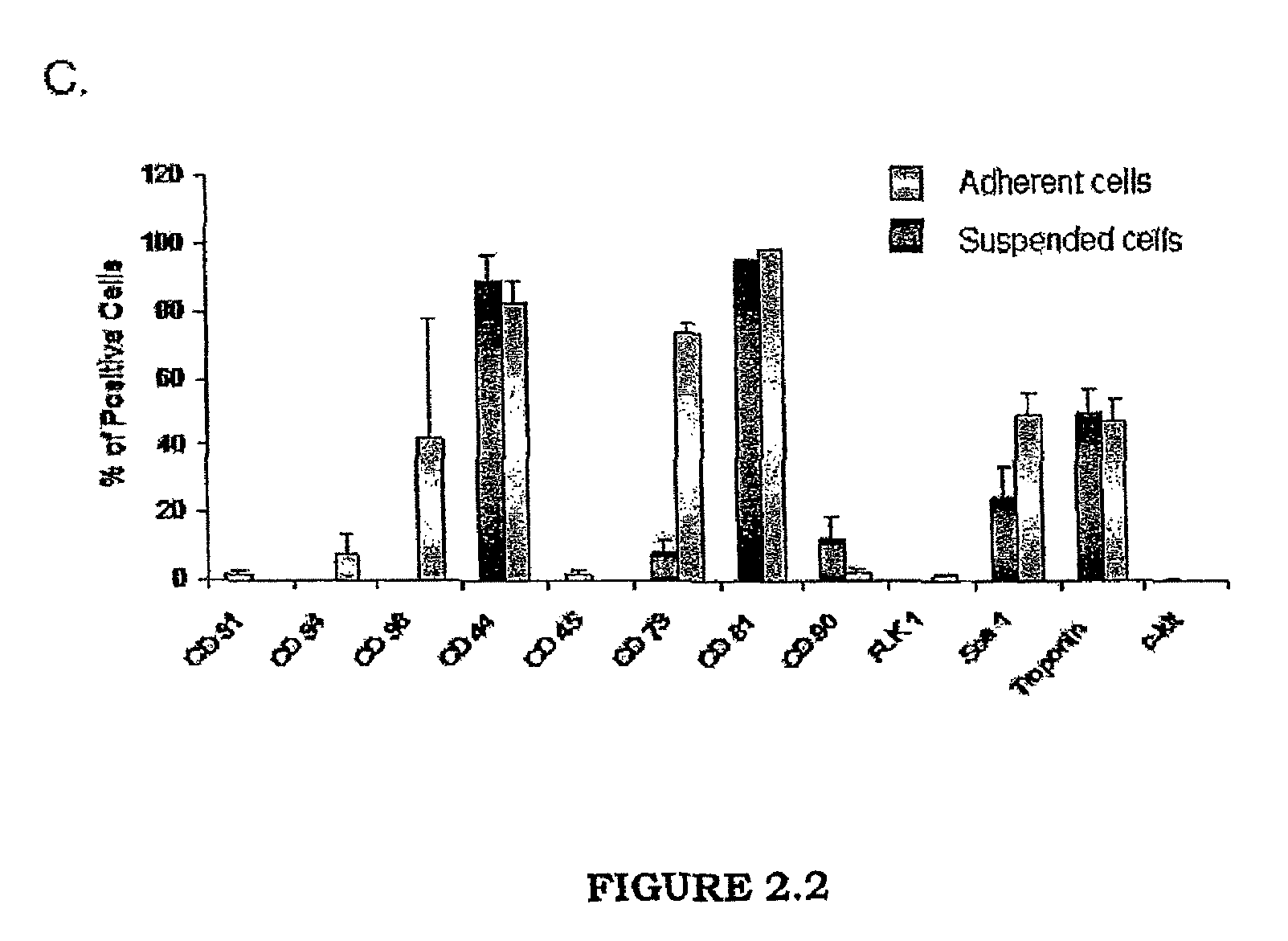Method for culturing cells derived from the adipose tissue and uses thereof
a technology of adipose tissue and culturing cells, which is applied in the field of culturing cells derived from adipose tissue, can solve the problems of difficult to carry out effective reconstruction of cardiac muscle tissues from the abovementioned cells, ethical problems, and do not give a good differentiation yield, so as to avoid remodeling and deterioration of left ventricular function.
- Summary
- Abstract
- Description
- Claims
- Application Information
AI Technical Summary
Benefits of technology
Problems solved by technology
Method used
Image
Examples
example 1
Materials and Methods
1) Animals and Tissue Samples
[0124]Male 8-week-old C57Bl / 6 mice (Harlan, France) and male GFP mice are raised in a controlled environment (light / dark cycle of 12 h at 21° C.) with free access to water and to the standard food intake.
[0125]All the procedures are carried out in agreement with guideline EEC / No 07430.
[0126]At the end of the experiments, the mice are killed by cervical dislocation under anesthesia with CO2.
[0127]The adipose tissue is rapidly removed and treated for the subsequent analyses.
2) Isolation of Adipose Tissue Cells
Method 1:
[0128]The cells are isolated from the adipose tissue of 5- to 8-week-old mice overall according to the method described by Bjöntorp et al., 1978, with minor modifications. The adipose tissue removed is dissected under a microscope in sterile dishes containing PBS, so as to remove all traces of muscle tissue, and then digested at 37° C. for 30 min, in digestion medium containing DMEM F12-0K, 2% BSA (bovine serum albumin) a...
example 2
Differentiation of the SVF Cells into Cells of Cardiac Type
2.1.: Standard Media
[0202]The DMEM-F12 standard liquid medium containing 10% of newborn calf serum, or the BHK21 medium containing 10% of fetal calf serum, conventionally used for culturing pluripotent stem cells, were tested in comparison with methylcellulose (positive control; FIG. 1A).
[0203]Whatever the elements added (IL3, IL6, SCF, BMP2, TGF-β, possibly also with exposure to 5-azacytidine), the DMEM-F12 medium never makes it possible to obtain differentiation of the SVF cells into cardiac cells in an effective manner.
2.2. Conditions According to the Invention
2.2.1
[0204]When crude SVF cells are seeded and cultured in a BHK21 medium containing 10% of fetal calf serum and on an appropriate adhesion support or surface (gelatin), approximately 10% of the cells exhibit a cardiac phenotype estimated by spontaneous contraction of the cells and expression of troponin T (FIG. 1B). The removal of β-mercaptoethanol results in the a...
example 3
Phenotypic Characteristics of the Populations of Adherent and Nonadherent Cells: In Vitro Data
[0227]The cell phenotypes are summarized in FIG. 2. It is seen that the two cell types have the following phenotypic characteristics: CD44+, CD81−, CD31−, CD45−, CD90−, ckit−, Flk1− and at least 50% are positive for Sca-1, troponin T and MLC-2v.
[0228]The major difference between the two cell types is that the adherent cells are positive for CD38 and CD73 (74%) and some (20%) express CD34, and are negative for MHC2, whereas this is not the case for the nonadherent cells, which are MHC1−.
[0229]A high expression of troponin T is inversely correlated with a low expression of CD90 (3-9%).
[0230]Table IV below summarizes these characteristics.
[0231]
TABLE IVPhenotypic characteristics of the adherent and nonadherent cellsAdherent cellsCells in suspension(elongated shape)(rounded shape)CD31−−CD34+ / −−CD38+−CD44++CD45−−CD62−CD73+Heterogeneous / −CD81++CD90Heterogeneous / −Heterogeneous / −C-kit−−MLC2v++ (50%...
PUM
| Property | Measurement | Unit |
|---|---|---|
| culture time | aaaaa | aaaaa |
| diameter | aaaaa | aaaaa |
| temperature | aaaaa | aaaaa |
Abstract
Description
Claims
Application Information
 Login to View More
Login to View More - R&D
- Intellectual Property
- Life Sciences
- Materials
- Tech Scout
- Unparalleled Data Quality
- Higher Quality Content
- 60% Fewer Hallucinations
Browse by: Latest US Patents, China's latest patents, Technical Efficacy Thesaurus, Application Domain, Technology Topic, Popular Technical Reports.
© 2025 PatSnap. All rights reserved.Legal|Privacy policy|Modern Slavery Act Transparency Statement|Sitemap|About US| Contact US: help@patsnap.com



